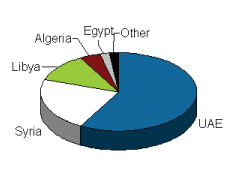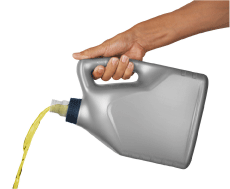Of the 63 thousand barrels of lubricant basestocks consumed in the AME region every day, almost 90% are Group I basestocks. The region’s demand for higher performance Group II and III basestocks is small, but growing, especially in the Middle East. This is due to the more modern car park of the Middle East in comparison to Africa and due to the significant amount of export production in the UAE, which comprises particularly of high quality lubricants. Group IV basestocks, on the other hand, have few consumers in the region. The size of the PAO based market is very small and the limited amount of demand that exists is satisfied through imports.
In 2009, AME produced about 48 thousand barrels per day of Group I quality lubricant basestocks. 80-85% of this supply comes from four leading supplier countries, spearheaded by Iran and followed by Saudi Arabia, Egypt and South Africa respectively. The majority of the region’s production plants use solvent extraction technology to produce Group I basestocks.
The region’s production, however, lags behind the local demand levels. With a supply rate of 48 thousand barrels per day, the region is at a 13-15 thousand barrels per day deficit. The deficit is slightly more pronounced in Africa, which has a lower basestock production than the Middle East. 50% of the overall deficit is for Group I basestocks.
To satisfy the deficit, the region imports roughly 14 thousand barrels a day of Group I, II and III basestocks from the rest of the world. The UAE is the largest importer. This is given by the large local blending requirement and the fact that it has no domestic basestock production. More generally, most Group I imports come into North Africa and are typically sourced from Europe. In turn, North Africa supplies Europe with used oils which are in high demand with European re-refiners, creating a kind of symbiotic relationship between them.
AME Group I imports by country (2009)

 To find out about the outlook for finished lubricants in the AME region, check back with our blog next week for the third part of our coverage of the Africa and Middle East basestock market.
To find out about the outlook for finished lubricants in the AME region, check back with our blog next week for the third part of our coverage of the Africa and Middle East basestock market.
Related Articles:

